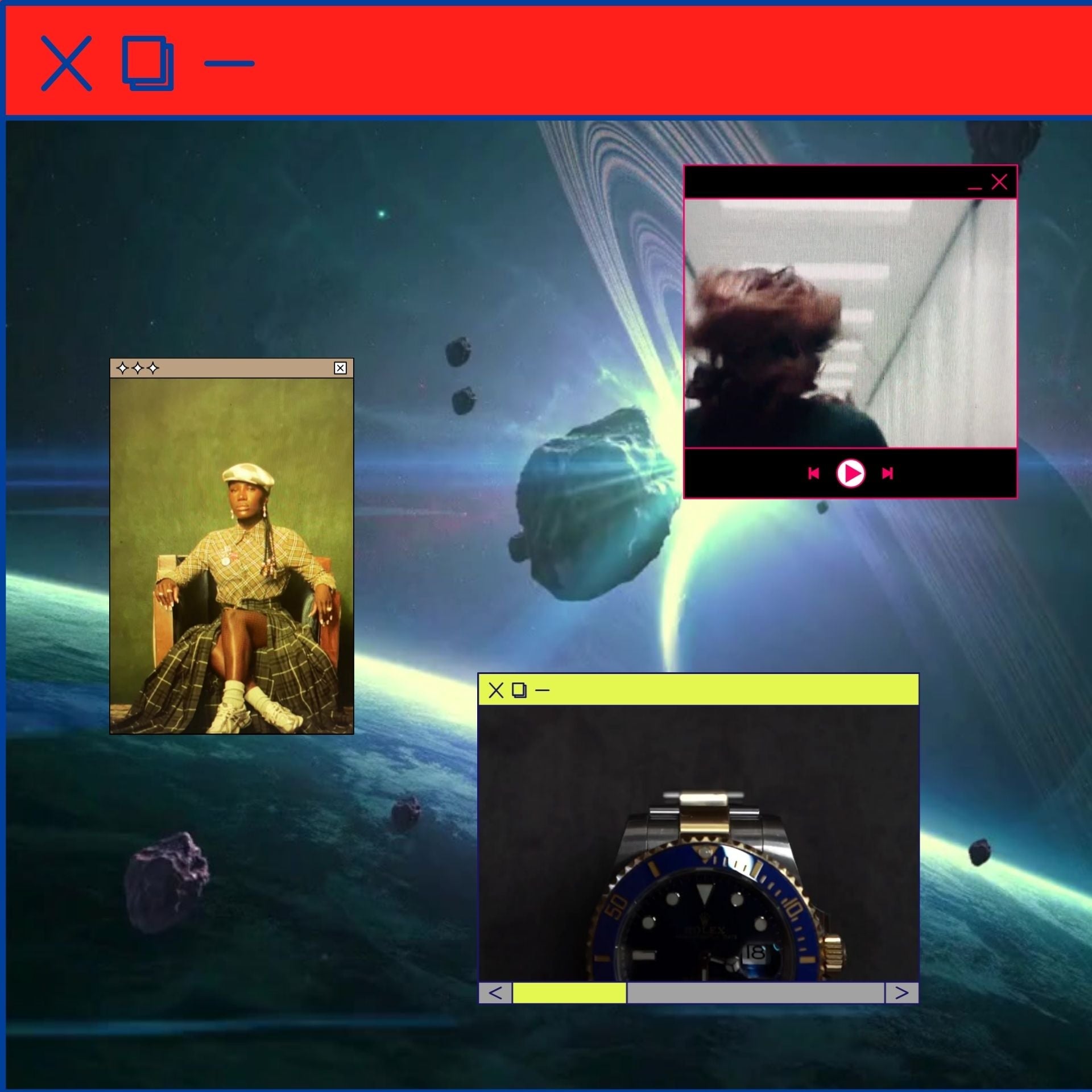

Metaverse Strategy For Traditional Brands, Startups, Web 3 Natives, and Creators
Brand experience in Web3 will not be measured by whether or not your brand is worth sharing with friends (NPS), but on your brands’ ability to build true community, govern with transparency, and commit to a brand promise with a corresponding intellectual property strategy and core narrative, for the long haul.
For incumbent Fortune 500 brands, startups, Web3 natives, and creators who want to win in the metaverse, you’ll need a metaverse strategy. Your metaverse strategy can be approached like your social media or web strategy guided by a new set of questions.
Below are said new questions that will serve as a blueprint for developing your metaverse strategy sourced from my own eight-month journey in helping clients, building our Far From Timid metaverse, and finally from the incredible Web3 native speakers at NFTLA, March 29-31 2022.
- What’s A Brand In The Metaverse?
- Where Should I Start? To NFT Or Not To NFT?
- Where Should I Build?
- How Will I Build/Measure Community?
- How To Integrate With Web2?
What Does a Brand Mean In The Metaverse?
Brands in the metaverse aren’t solely populated with what we recognize as brands like Nike, Red Bull, Major League Baseball, IBM, or Gucci. They are Web3 native brands like Doodles, Bored Hungry Restaurant (creators of a food fighting universe), and spaces like Aokiverse that are bound together by strong network partners, meaningful visions for the future, and community.
The important thing is to get into the metaverse, now. Baby steps with a test and learn philosophy.
Where Should I Start? To NFT Or Not To NFT?
Brands can enter the metaverse in two ways: Collaborate with an existing Web3 native brand or create their own metaverse experience, typically beginning with an NFT drop. The key is authenticity. Success in the metaverse, whether for a direct-to-consumer packaged goods company or a service-based company, will depend on the level of commitment and value exchange companies are willing to invest towards community and engagement for the long-term. You can’t dabble in the metaverse.
For Traditional Brands
Behr Paint Company, a supplier of architectural paint and exterior wood care products founded in 1947, didn’t launch with an NFT drop, but with a collaboration with Doodles, a colorful series of 10,000 NFT’s that you may recall–it’s the metaverse with the NFT logo of a boy puking a rainbow. Andy Lopez, VP of Brand Marketing for Behr, reveals the thinking behind the Behr X Doodles metaverse launch at SXSW, “We thought about doing a drop immediately…We wanted to be able to do it in an authentic way where we were able to reach this community in a new way and then continue to build from there. And I think that’s the right approach brands should be taking vs feeling like they just have to follow what someone else has done.”

For Mattel, NFT drops are a natural fit for brands like Barbie® and Hot Wheels®, who have collector audiences. Although, they have a fully engaged Web2 audience, authenticity is still a prime concern ensuring they don’t alienate the off-chain community they have built. Ron Friedman, VP of Mattel Future Lab, shared during NFTLA that when they decided on an NFT drop for Hot Wheels®, they were afraid of how their existing community of collectors would react because NFT’s are not the tangible products they are used to. “We went through a big process, so whatever we built, it was built on same tenets, same authenticity, scarcity models that we built the physical products so that it would resonate with them.”

Hot Wheels launched in June 2021 with an NFT drop titled “Hot Wheels NFT Garage” that featured an auction of three of their most popular classic cars: Twin Mill, Bone Shaker and Deora II. The debut auction took place on their own Mattel Creations website. For the next two drops (November 2021, March 2022) their Hot Wheels garage took place on Worldwide Asset eXchange (WAX).
Despite the promise of Web2, analog companies like Mattel (where consumers buy a product off the shelf), are still unable to connect through the entire customer lifecycle. NFT’s provide a way for brands to continuously connect, add value, and deepen the relationship with collectors with the transparency of blockchain as its backbone.
There’s a new generation of collectors, a new generation of consumers and how do we bring our traditional physical goods in the digital world in a way that continues to resonate in a very authentic way?
- Ron Friedman, VP Mattel Future Lab
For companies like Behr whose audiences need a major onboarding initiative and do not have natural collectors as consumers like Mattel, a partnership with a Web3 native brand is a perfect way to enter the metaverse, especially if the partnership is symbiotic. Mr. Lopez felt the Doodles partnership was perfect because “Doodles already has such an iconic color palette so that’s what made it feel like such a natural fit for the Behr brand…and really bring their metaverse, their experience, their world to life in a real world experience.“
Reeve Collins, CEO of BlockV and Tether, guides his start-up clients to start with something simple if they are skittish. He thinks brands can invest in small ways like, “having the consumer do an interaction that they already want to do such as a (NFT) sweepstakes or a coupon or access and when they sign up they actually get a wallet and now this wallet is a new way for brands to engage with their users through a digital object (NFT).”
When our client Roaring Earth, a curated wildlife media platform that creates thrilling and thought-provoking stories about our roaring earth for its 10 million strong community, came to us to develop an NFT collection, we developed a narrative supporting biodiversity called Rewilding The Metaverse. As the creative process took its natural course, we discovered an metaverse, 3D gamified experience, needed to accompany the NFT collection in order to be authentic and lean into our narrative. Then, developed a realistic roadmap that allowed our client to launch in baby steps because in the metaverse, things don’t have to happen all at once. Our roadmap indicated that the money earned from NFT’s would be reinvested into the metaverse–governed by the community.

For Web3 Native Brands
Asad Malik’s AR app, Jadu, began as an interactive hologram app that allowed music fans on TikTok to engage with dancing holograms of their favorite artists like Pussy Riot, Vic Mensa, and Lil Nas X.
With the rise of NFT’s, Jadu turned those holograms into NFT’s. In November 2021, Jadu evolved its entire platform around NFT’s and launched Mirrorverse, an Augmented Reality game-world¹ built around virtual items² owned by its community³ of players, featuring its hoverboards and jetpacks.
On the stage of NFTLA, Malik described the company’s evolution: ‘When NFT’s popped up it just became a natural cozy fit. It just made so much sense that the incentive systems that are going to get people to move around on the physical planet and collect items. The psychology of that is so different from how the world has worked otherwise so that’s why it made so much when we released Jadu Jetpacks in September and sold out it 20 seconds. Then released Hoverboards in December which also sold out immediately.
Really what they (NFT’s) are serving is a psychological purpose and an identity purpose and those things we can serve much better without any constraints in the digital world.
- Asad Malik, CEO Jadu

For Influencers & Artists
Adam Friedman, an executive at CAA, the Hollywood talent agency that represents Gwyneth Paltrow, Mila Kunis, Ashton Kutcher, and Reese Witherspoon, among others, proselytizes the importance of a metaverse strategy. He doesn’t want his clients thinking about how to make a quick million, but rather sits them down and ask, “Why are you doing this, why do you want to get into this space?”
Wealthy celebrities have failed in the metaverse because they didn’t have a strategy or a community in place, as Richard Vagner, Grammy-Winning Instrumentalist & Producer explains, “Nas’ NFT drop didn’t work because there was no interactivity. It’s about coming through space rather than airdrop.”
Celebrity isn’t required to be successful for artists. Cooper Thurley, a music NFT investor and collector, emphasizes what’s important to him, “How Web3 native the artist is, is really important to me. How integrated into the community they are. If there is an artist leaning into making Web3 a centerpiece, that’s what I’m looking for.”
Macy Gray got into the NFT space because she wanted to get back to the art of making music from preserving sound to displaying credits and album covers that lost popularity due to streaming music. In one of the most illuminating assertions I’ve heard this year, Ms. Gray shared, “When you hear records on Spotify they have to normalize the sound, like ridiculously. Like you spend all this money mixing your record and then they kill it anyway.”
Check out Macy Gray’s new single, “All Spangled Banner” in support of Ukraine on MakersPlace. I checked to see if the song’s analog twin is on Spotify to compare the sound, but, no luck.
Where Should I Build?
In the analog world it’s all about location, location, location, but does it really matter in the metaverse if you have land next to Snoop? It doesn’t.
When I began creating metaverse strategies eight months ago, this question was more difficult to answer because there were only a few places to build if you didn’t want to invest in creating your own WebGL experience like SK-II, then it was Decentraland, Roblox, or Sandbox. Eight months later, we see new on chain platforms marketing to specific industries and many brands like Atari and Nike have a presence on multiple platforms.

Leading toy company Mattel signed a partnership with WAX blockchain to launch its Hot Wheels Garage brand. Wax boasts an eco-friendly blockchain for NFTs, video games and collectibles and in addition to Mattel, sells NFT’s for other consumer product companies like Sony, Hasbro, and Deadmau5.
One of, a green NFT platform connecting music and sports fans to their favorite artists, athletes, and brands is built on Tezos, another energy efficient blockchain also used by Red Bull and Sweet.io.
Decentraland is home to Samsung, Nike, Coca-Cola, Atari, Sotheby’s and focuses more on buying, selling, and trading digital land. While it has become more popular with investors and businesses looking to invest in real estate, it is still a credible space for brands to host built-in activities like games, gambling, and concerts.
Sandbox has attracted artists, creators, and players because users can build their metaverse to spec and players have more control of the platform and is home to Snoop Dog, Gucci, Warner Music, and Adidas. Sandbox will be launching a DAO in 2022.
Bookmark this list of 2022 metaverse platforms to watch
How Will I Build Community?
This generation of consumers are not consumers. They are collectors, creators, and shareholders of your brand. Their online identity is equally or even more important than their identity in real life. While Web2 promoted conversations and engagement, Web3 is hyperpersonal and demands relationship-building that requires Bonsai-plant growing tenderness.

Telegram App
A social media specialist in Web2 has a steep learning curve moving over to Web3. It’s more organic and fluid than scheduling, creation, and engagement time blocks. While Discord, Telegram and Twitter are the prominent Web3 community channels, Discord’s popularity is credited to its legacy as platform of choice for gamers and other web3 natives, but is getting new competition from the likes of Web3 community platforms like Mighty Networks that boast an intuitive user-interface. Just do a search for Discord on Twitter and you will hear the cries of clunkiness.
Building community in the metaverse is not only the one-to-one relationships with potential consumers, but with like-minded brand partners. Ron Friedman of Mattel believes community is about “finding like-minded, spirit purpose driven brands that can lift the entire experience and bring communities together…it’s about amplifying the message and bringing people in.”
The core tenet of Web3 is about belonging.
- Cooper Thurley
Mattel began building their Web3 community on their existing social channels to make sure legacy audiences felt included and respected so when they launched on Discord their “old school collectors” gravitated there.
Richard Vagner shared that before he launched his start-up Spoiled Banana Sports Society, he spent a year listening and learning. That's honest goodwill which is rewarded heavily in Web3 community-building efforts.
Building community in Web3 is intrinsically tied to the strength of your Web3 narrative, the utility and unique features of the experience, and level of personalization you are willing to invest. Jadu’s CEO, Asad Malik, asserts, “It’s up to us to set the boundaries on how we want to establish these relationships. Value exchanges are a lot more complicated. You can get a lot more creative.”
The large incumbent brands that typically stand on the sidelines to wait and see with emerging platforms cannot afford to forego early adopter status in Web3. As Andy Lopez, VP Brand Marketing of Behr shared, “This community is moving faster than anyone can keep up with and they are setting the trends and setting these behaviors and you are trying to figure out from a brand standpoint how you can be a part of that and it’s different when social media came about...You won’t be able to show up late. You have to get into it now, you have to be ahead of it, to understand it and move as quickly as possible.”
How To Integrate With Web2?
Let’s contexualize where we are in the evolution of the metaverse. According to Unreal Engine’s Marc Petit, “We are in the baby version of the metaverse, and it will evolve.” If we combine the numbers from Fortnite, Roblox and Minecraft, we have 300 million daily active users in metaverse-like platforms every month — which equals the total user base of the internet in 1999.
Identity
The discussion of Web2/Web3 integration begins with understanding the Web3 native user. Pseudonymity is a core feature of the metaverse where identity is built on avatars, digital assets, and activity rather than physical being. All avatars begin as full pseudonyms. The person adopting the avatar may choose to remain fully pseudonymous or connect his/her/their identity — parts or all of it.1 This means an avatar named Cowboy Jack might be a 35 year old Asian, transgender female.
While identities are fluid in Web3, there are still a few demographic factors to keep in mind.

From 2010 until 2018, I heard the word Millennial more times than my mother has ever heard me call her Mom. In the same way the mid-late aughts signified the urgency to attract Millennials, Web3 brings an urgency to engage GenZ. Most of Web3 daily active users are gamers and the average age of gamers–between the14-18 years old’s on Fortnight/Roblox and the Boomers playing card and casino games–is 33 years old. While the demographics skew male, there is a huge media effort to attract women into the metaverse. Read more about women shaping the metaverse here.
Demographic factors alone are not strong indicators of the kind of narrative or experience to build for your audience in the metaverse. What demographics can indicate is that the Web3 native user is a gamer and that your Web3 experience needs to be built with game and film theory applied.
Marketer’s Web3 Mindset
Before you develop your integration strategy, keep in mind Web2 brought in a new era of corporate gatekeeping and established the value exchange of data for experience for its users. Web3 is an entirely new set of principles based on decentralization that requires a mindset of community first, profit second.
Your C-Suite will look different in Web3 and will include your community in the evolution of your brand, so silos do not apply. If you are searching for your Chief Metaverse Officer, think again, because silos will be the destruction of your brand in Web3. Things are moving too fast, and in Web3 if you don’t move fast, you die. Decentralization of Web3 will usher in the total destruction of silos.

The best way to approach the Web2/3 integration is to maintain your most highly engaging Web2 customer journeys, while adding incentives to join your Web3 community. Treat Web3 as a way for new audiences to experience your brand and for existing audiences to experience your brand in new and exciting ways. For a company like Mattel, Ron Friedman believes, “Our job as marketers and product managers is to think about what that consumer experience needs to be and work backwards from there.”
As for the Web3 investment rationale? Look at it as a cost of doing business. Adam Friedman, Executive at CAA looks at it this way, “Think about entering the space as capex (capital expenditure) and needing to realize that capex along the way.”
We end this article (almost whitepaper) with our favorite moment at NFTLA of Steve Aoki sharing how he approaches community.
“I wanna f🎧cking make you feel something.The most important lesson in life is to amplify your f🎧cking feelings. Like feel it. That’s all we f🎧cking have is these memories, these moments, these experiences that matter to us.”
____________________________________
Book a 30-minute Brand Therapy session to discuss your Web3 strategy here
For our next issue, we’d love to know your burning Web3 questions. Email them to our editor.



